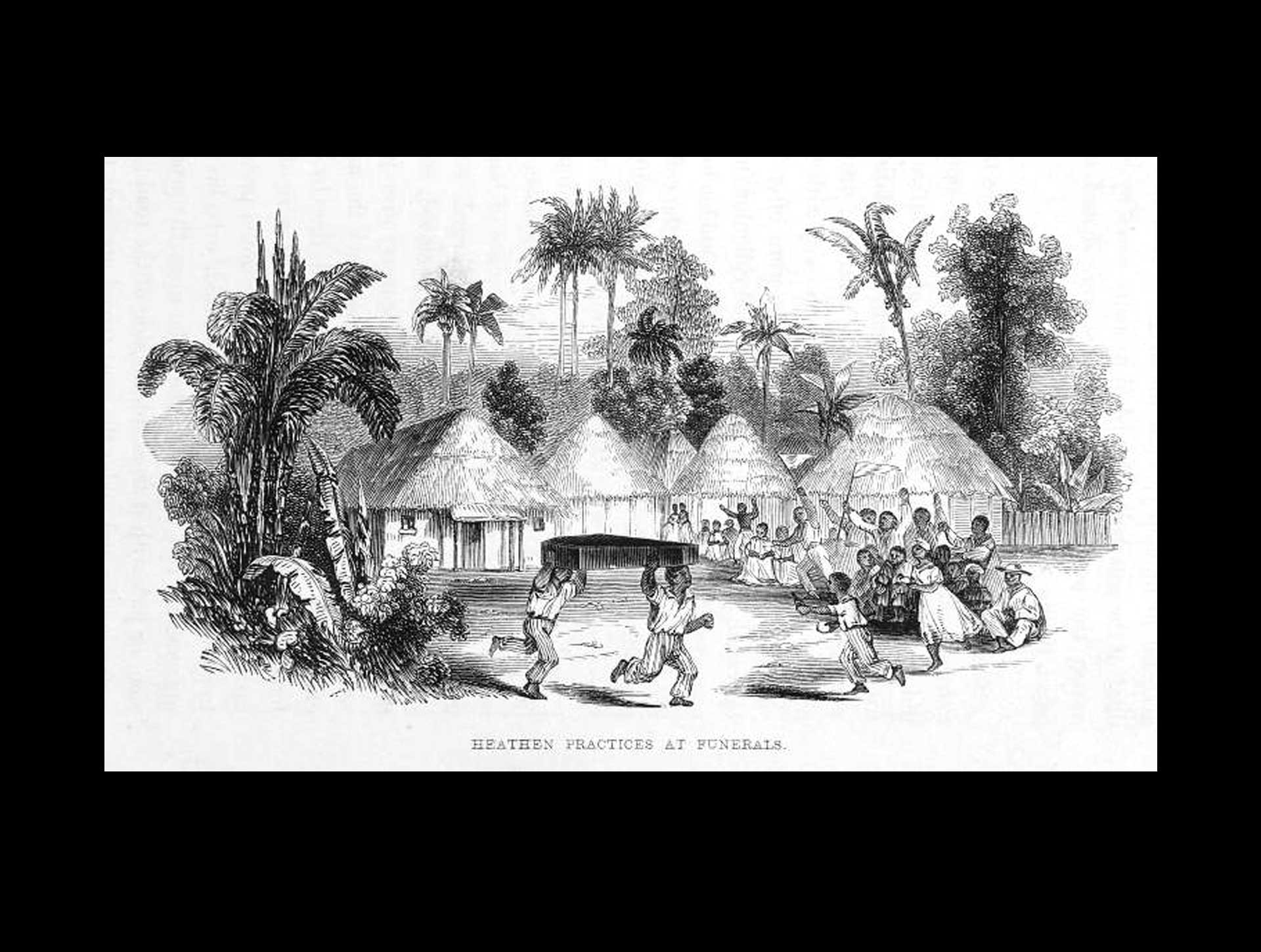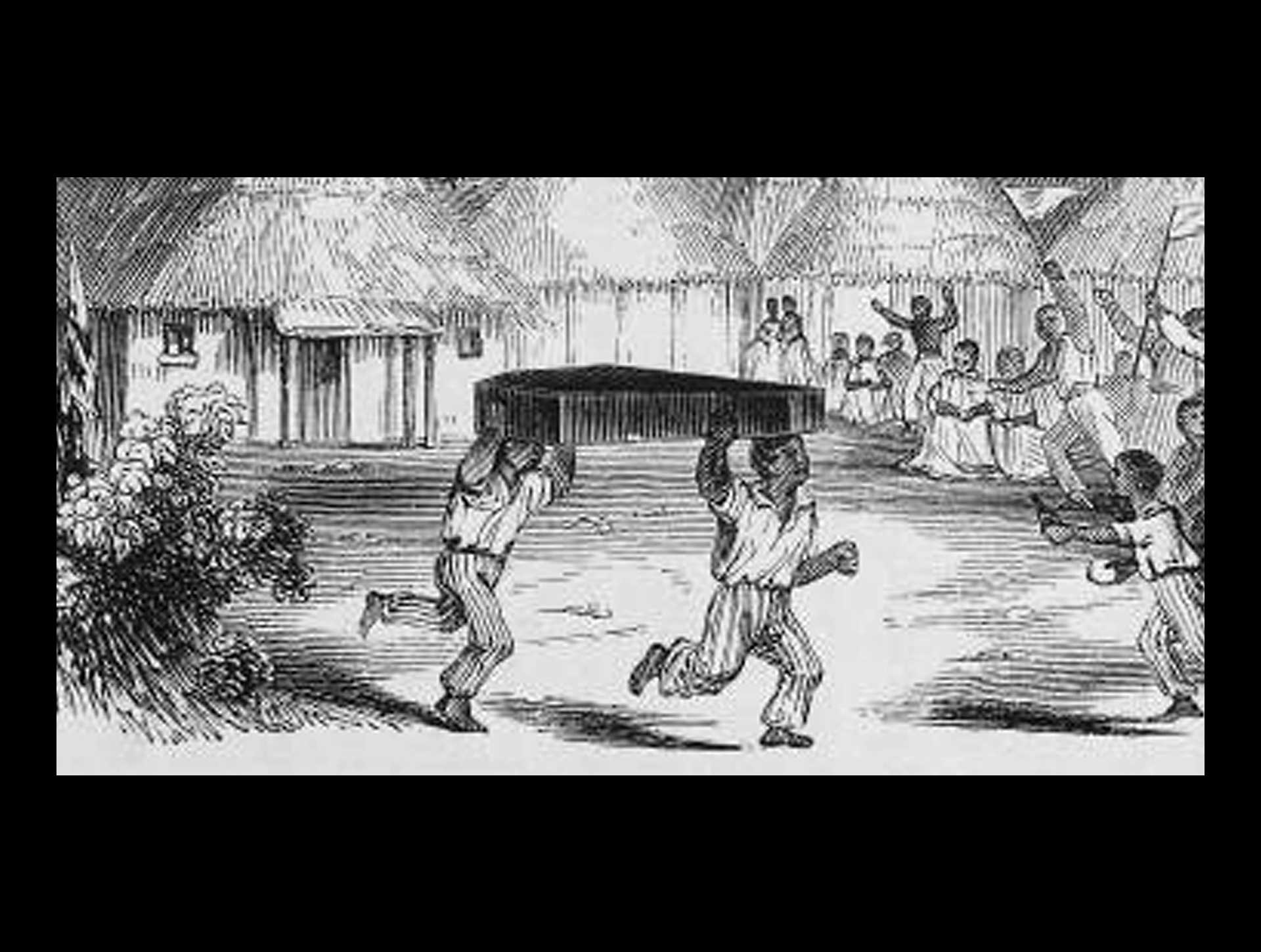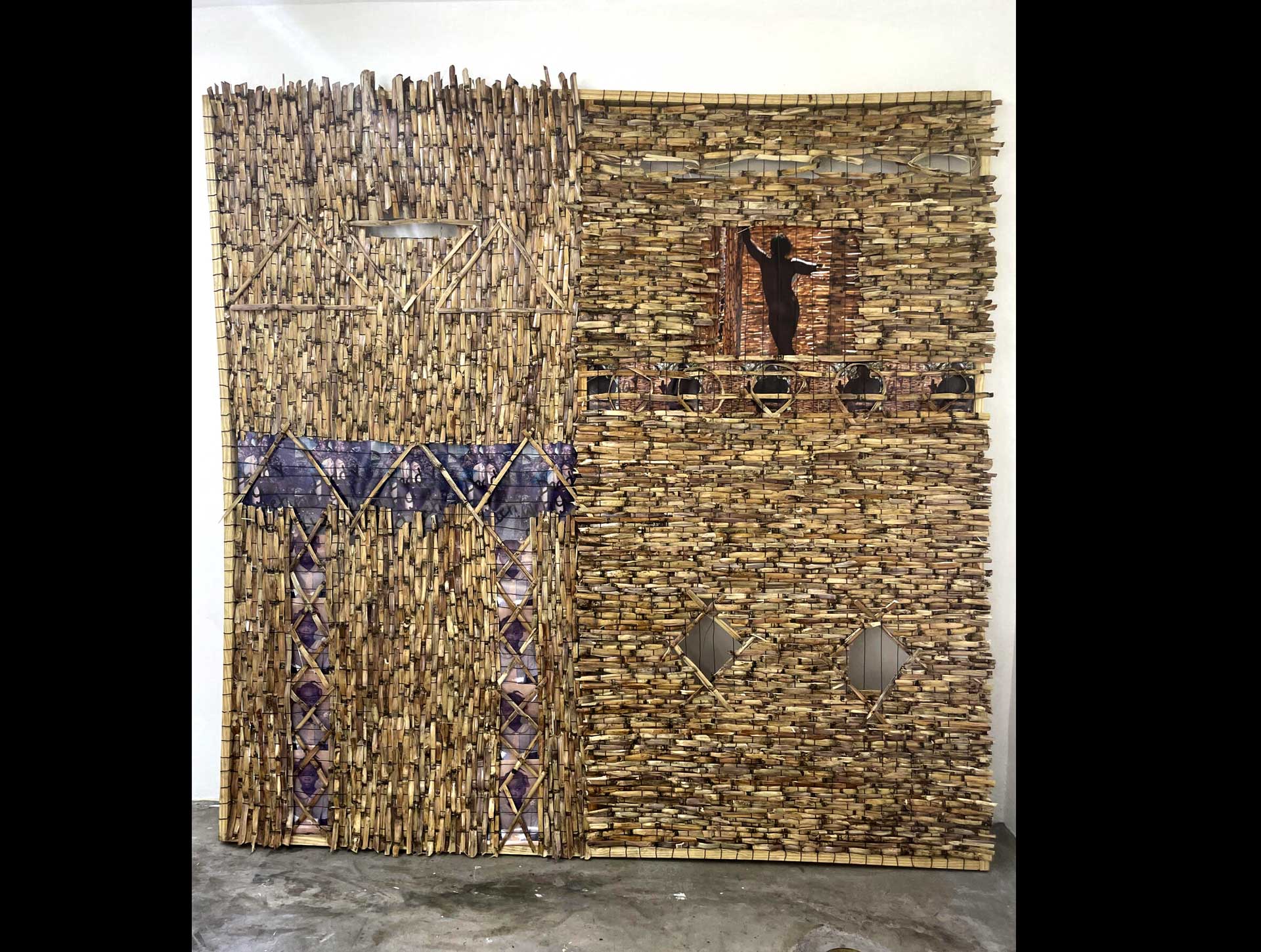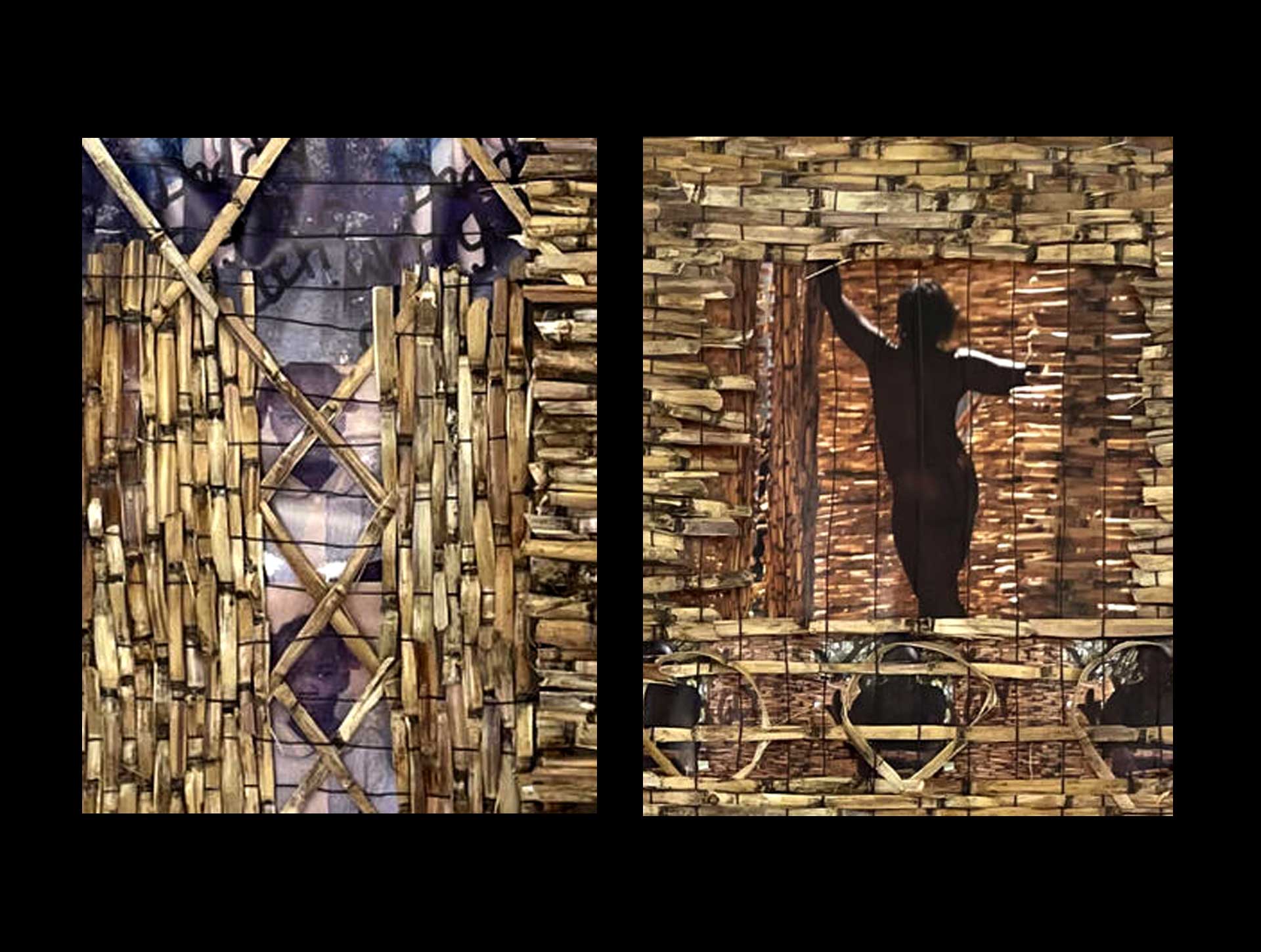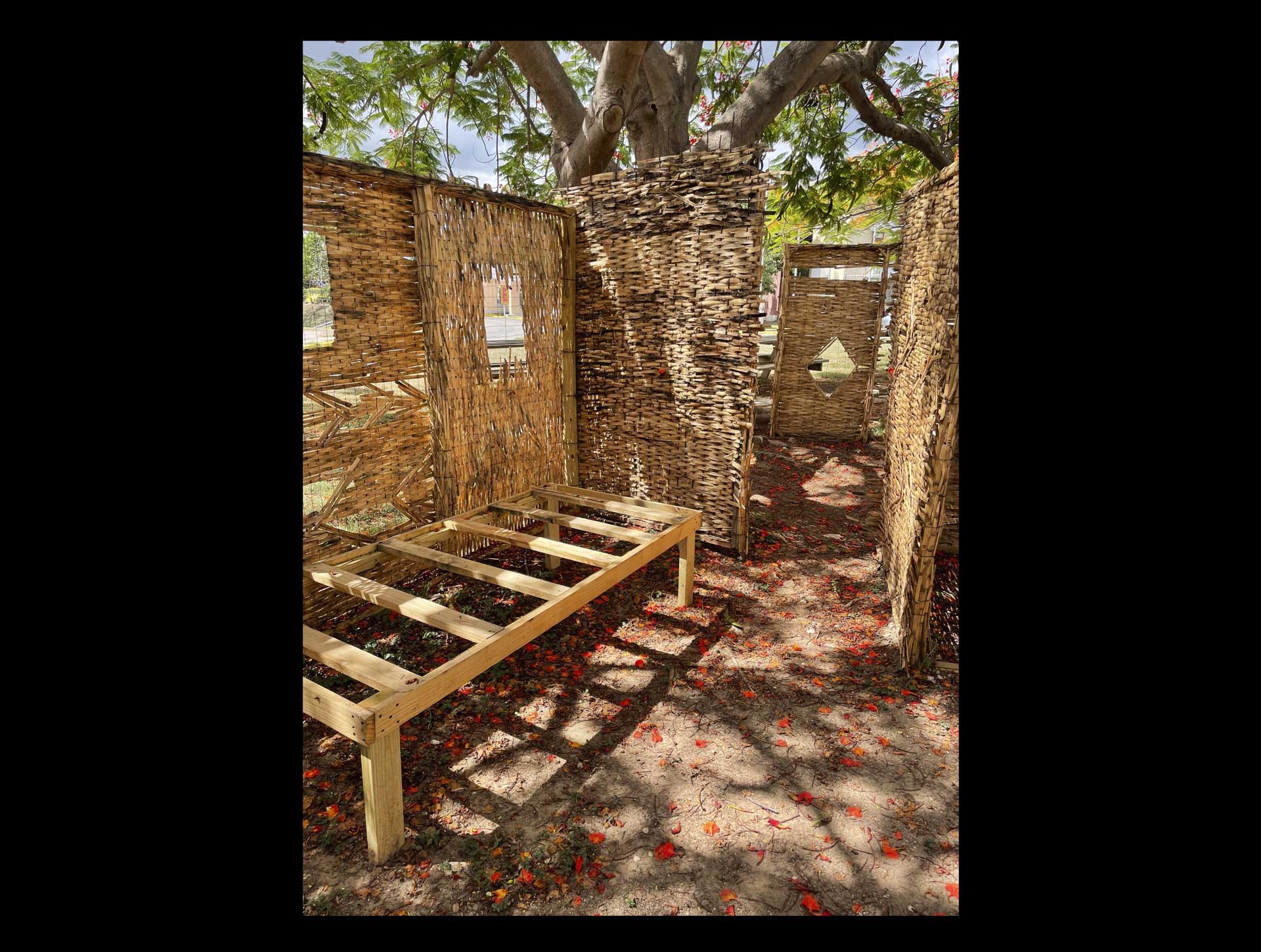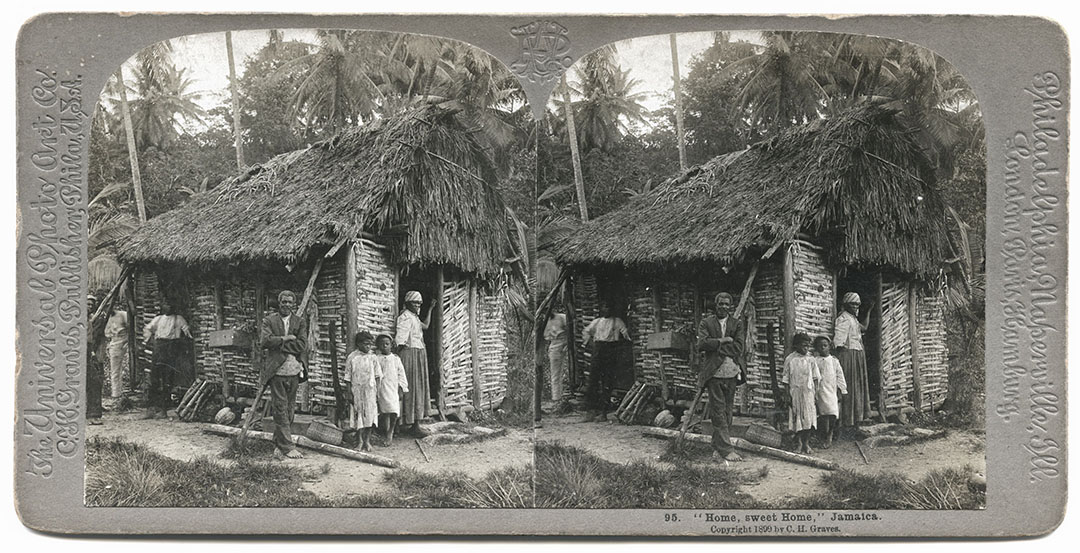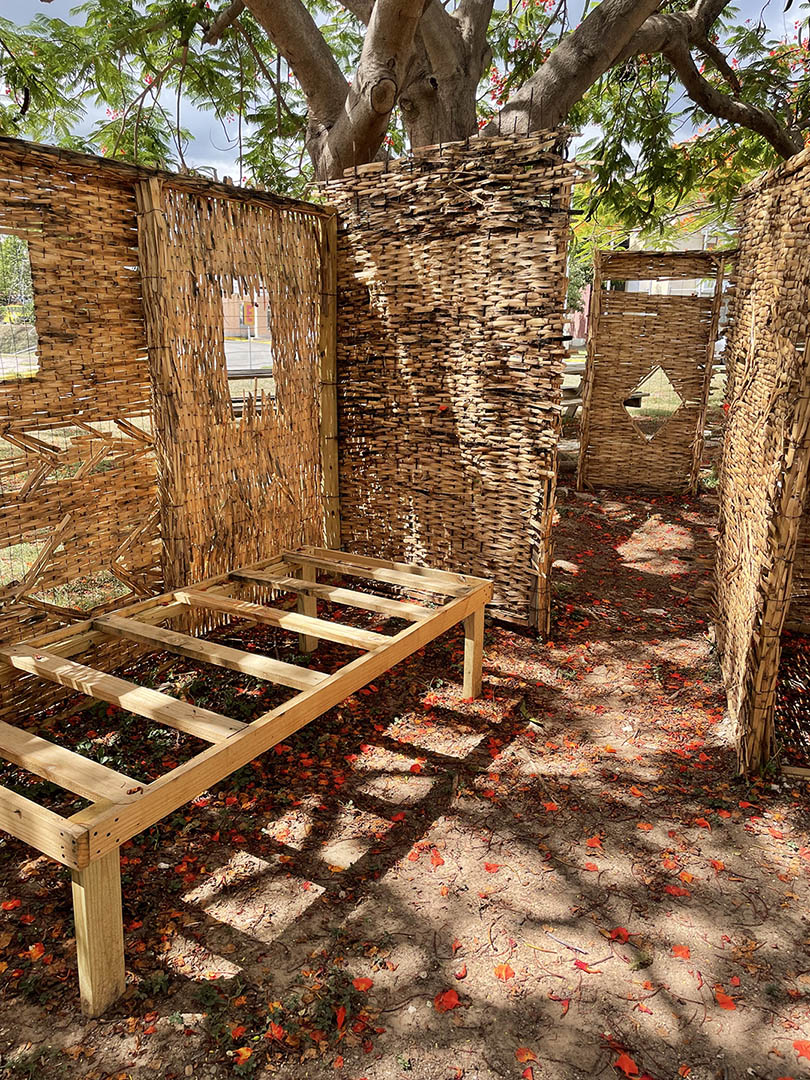PALIMPSESTS
Kinships and Intimacies
Referenced works
James M. Phillippo, Heathen practices at funerals, in Jamaica: Its Past and Present State (Philadelphia: J.M. Campbell & co.; New York: Saxton & Miles, 1843). Schomburg Center for Research in Black Culture, Manuscripts, Archives and Rare Books Division, The New York Public Library.
Michaella Garrick’s installation at the Edna Manley College, 2022. Courtesy of the artist.
C.H. Graves, Home Sweet Home, Jamaica (1899), The Caribbean Photo Archive.
View inside of Garrick’s Aye, Black Girl, 2022. Photo by Deborah A. Thomas




